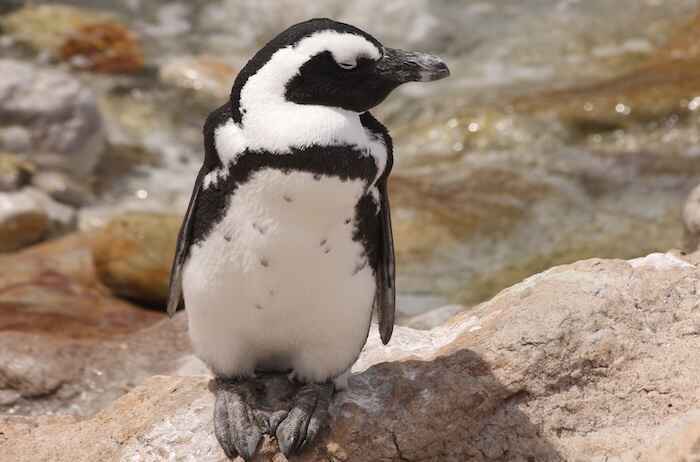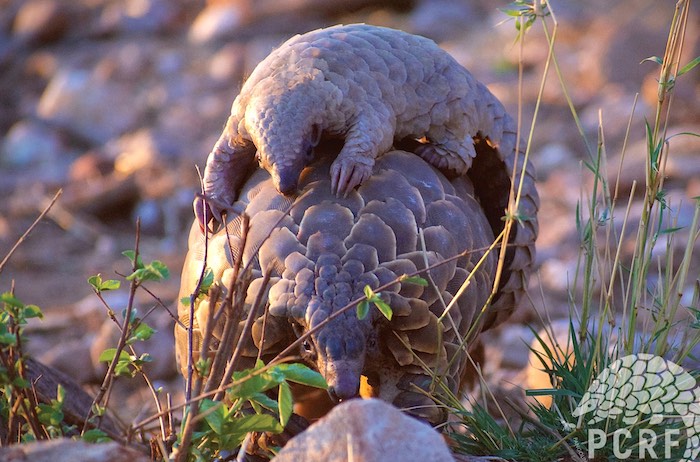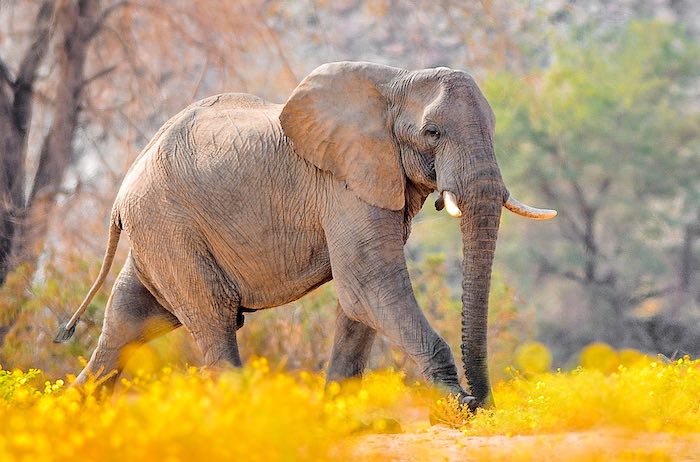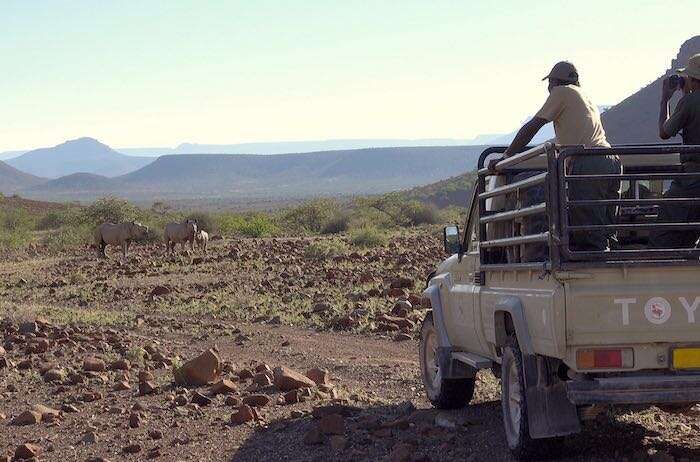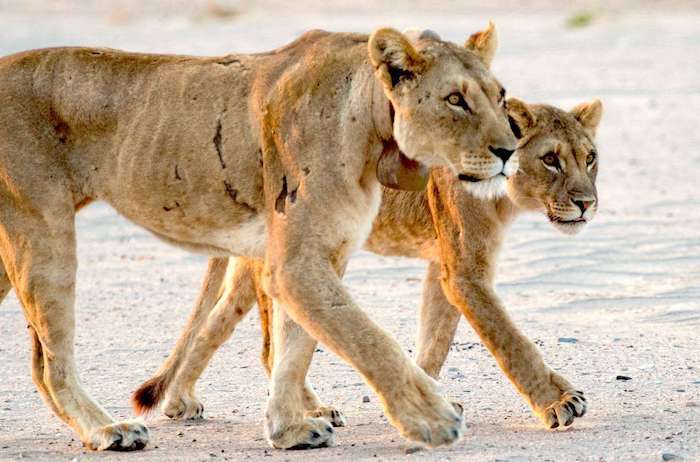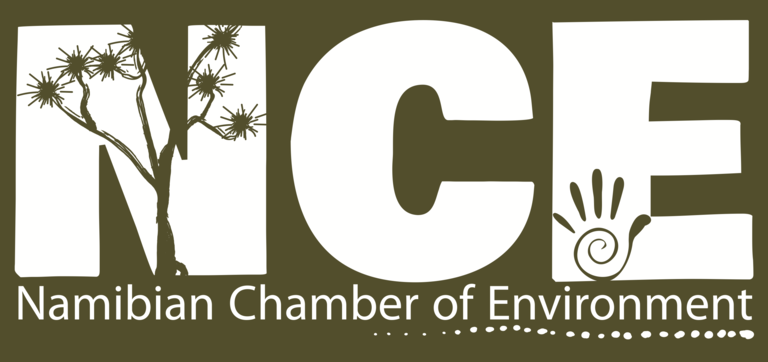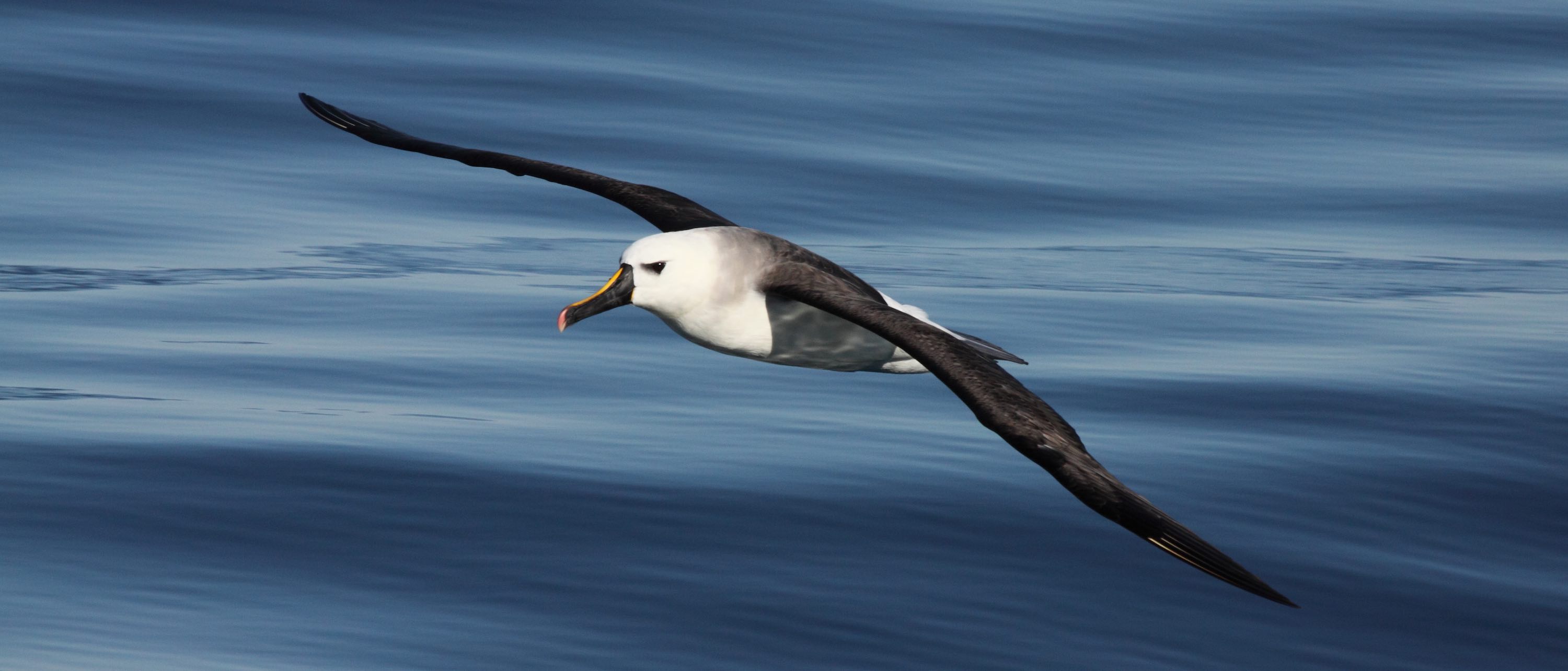
Gliding into a Brighter Future
Albatrosses and Namibian Fisheries
9th September 2021
A fluffy little albatross chick is born on Gough Island in the Tristan da Cunha archipelago far off the African coastline in the southern Atlantic Ocean. With a large body, tiny wings and webbed feet, he doesn't exactly look like one of the most graceful birds on the planet. Yet, under the care of both parents that bring back fresh supplies of regurgitated fish, his little wings will grow long and narrow, while the chubby body continues to put on weight.
At around seven months old, he will join many others of his species in running (i.e. waddling at speed) along the ground into the wind, eventually taking to the skies. He will spend the next five years gliding ever more gracefully and efficiently over the ocean, rarely touching land. The combination of a heavy body and long, narrow wings make it difficult to take off and land (crash-landings are common!), but the real advantage is in the air.
Albatrosses have what is known in aerodynamic terms as high wing-loading (i.e. very heavy relative to their wing size) and a high wing aspect ratio (i.e. long and narrow wings), plus a special sheet of muscle that keeps the wing locked in position during gliding. Albatrosses boast the longest wingspan of any bird in the world, with the largest species (the wandering albatross) topping the charts at a staggering three metres. Taken together, these features make the albatrosses perfect gliders – allowing them to fly for thousands of kilometres with minimal energy spent on wing flapping.
Similar to soaring birds on land that use wind thermals to gain height, albatrosses use the wind generated just above the ocean surface to maintain their momentum with a technique called dynamic soaring. They alternate between gliding in the same direction as the wind to pick up speed – while losing altitude – and then banking to face the wind just before they touch the ocean surface to create lift. Once they have gained sufficient altitude against the wind – but just before they lose speed altogether – they bank again to glide downwards with the wind. In this manner, the wandering albatross can maintain a speed of 80 km/h for days on end and circumnavigate the globe in only 46 days!
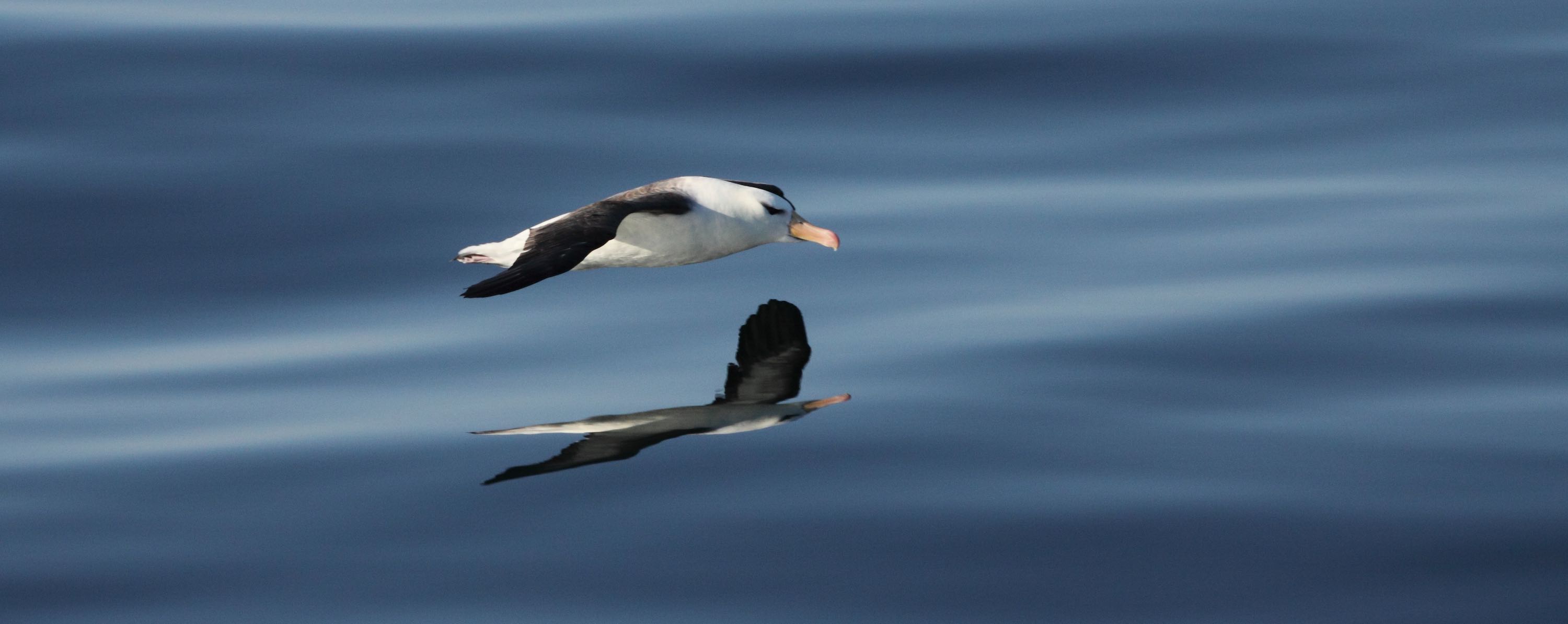
The albatross's flying abilities have inspired human engineers in their search for ever more efficient gliding machines – particularly for developing large drones that can fly with minimal fuel loads. Yet this inspiring family of birds is severely imperilled by humans: 15 of the 22 albatross species in the world are considered threatened (i.e. Vulnerable or worse) by the International Union for the Conservation of Nature (IUCN). The greatest threat to albatrosses is being caught as bycatch
in marine fishing operations.
Fishing vessel captains and crew have no desire to catch albatrosses – indeed, killing one used to be considered terrible luck by sailors – but the bait they use to catch fish and the offal they throw overboard are an irresistible attractant for many seabirds, including the albatross. When seabirds scavenge around these fishing vessels, they could get hooked by the lines used in longline fisheries, tangled in the nets used by trawling vessels, or collide with one of the many cables used to deploy these fishing instruments.
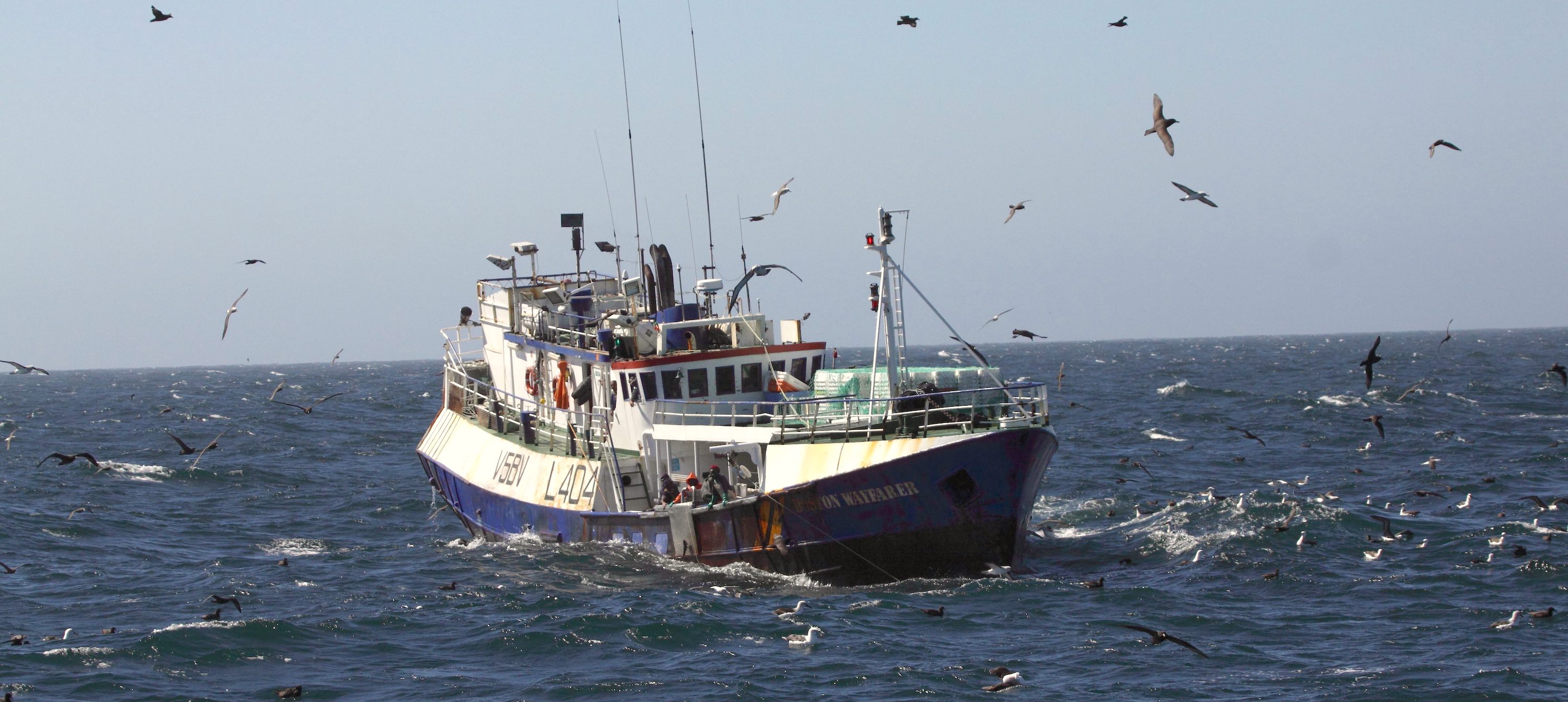
Marine fishing lines can be over 20 km long and carry over 14,000 hooks (each bearing an attractive piece of bait); each line is weighted and thus sinks to a certain depth to catch fish. While the line sinks, however, it is within reach of seabirds that grab the bait close to the surface or dive for it to a depth of up to 16 metres (in the case of petrels). It is no wonder that longline fisheries are especially dangerous for albatrosses, petrels and other seabirds.
The fluffy little chick described in the first paragraph is an Endangered Atlantic yellow-nosed albatross – one of only 35-70,000 left in the world. If he was born in the early 2000s and fledged successfully, he would most likely have encountered one of the deadliest commercial fishery operations in the world for his kind. He might have been one of the 30,000 seabird casualties recorded for Namibian fisheries in 2009 alone.
Albatrosses take a long time to reach sexual maturity and perfect their complicated mating dance, so our little chick may never have fathered his own offspring. If one of his parents was killed after they had finished raising him, the other one might never find another mate. Each albatross death, whether of an immature or adult bird, is therefore a tragic loss.
This is why the recent announcement that the Namibian commercial longline fisheries have reduced seabird bycatch rates by a whopping 98% is cause for celebration. Longline fisheries accounted for 22,000 of the 30,000 seabird deaths reported in 2009. So when only an estimated 215 deaths occurred in 2018, bird conservationists were overjoyed. Even more encouraging, no albatross deaths (of either Atlantic yellow-nosed or black-browed albatrosses) were recorded by observers from the Albatross Task Force (ATF) after new fishing regulations were introduced in 2015. Additionally, white-chinned petrel (classified as Vulnerable by the IUCN) deaths declined dramatically after the regulations were introduced – this species accounted for 84% of the thousands of seabirds killed before the regulations came into force.
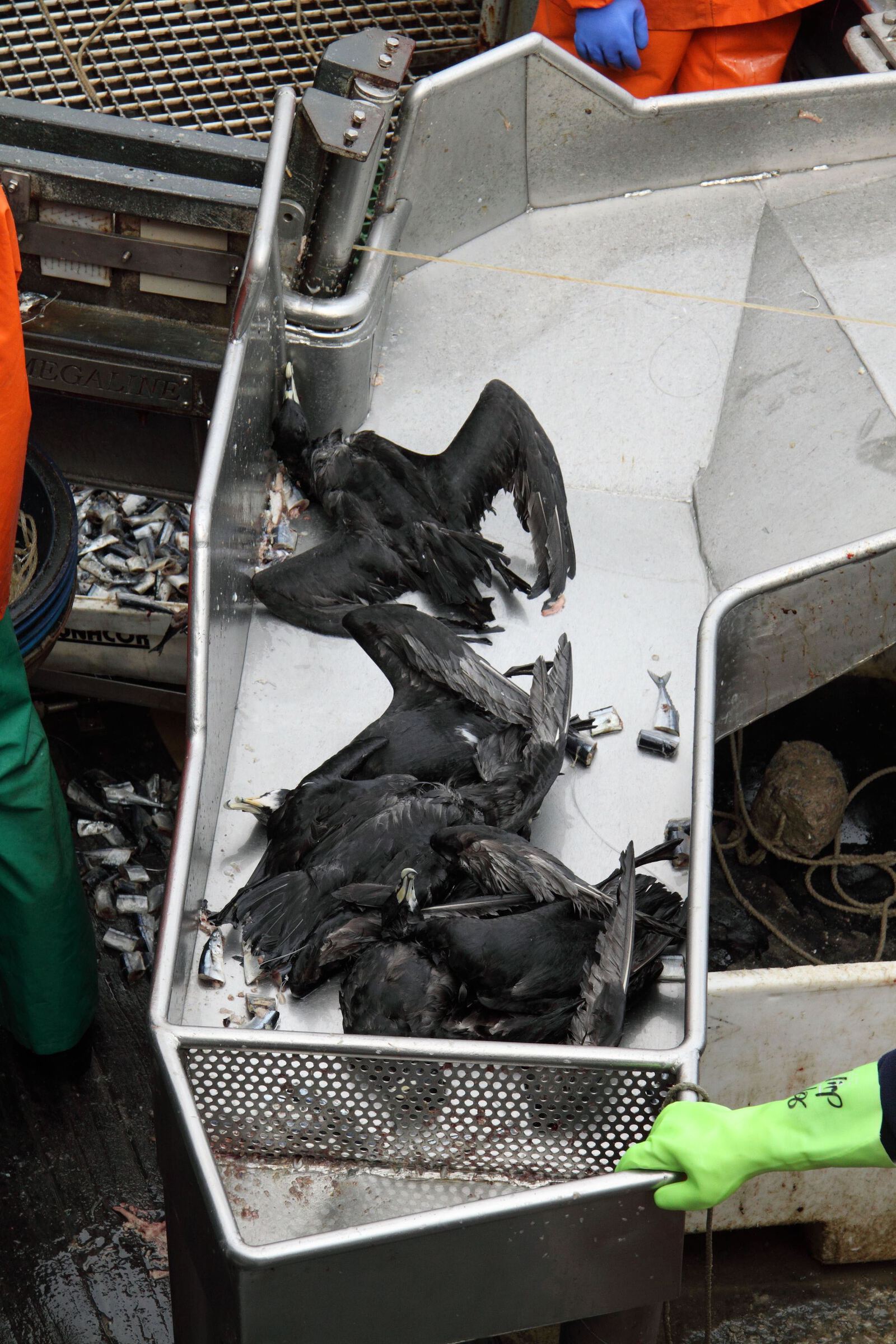
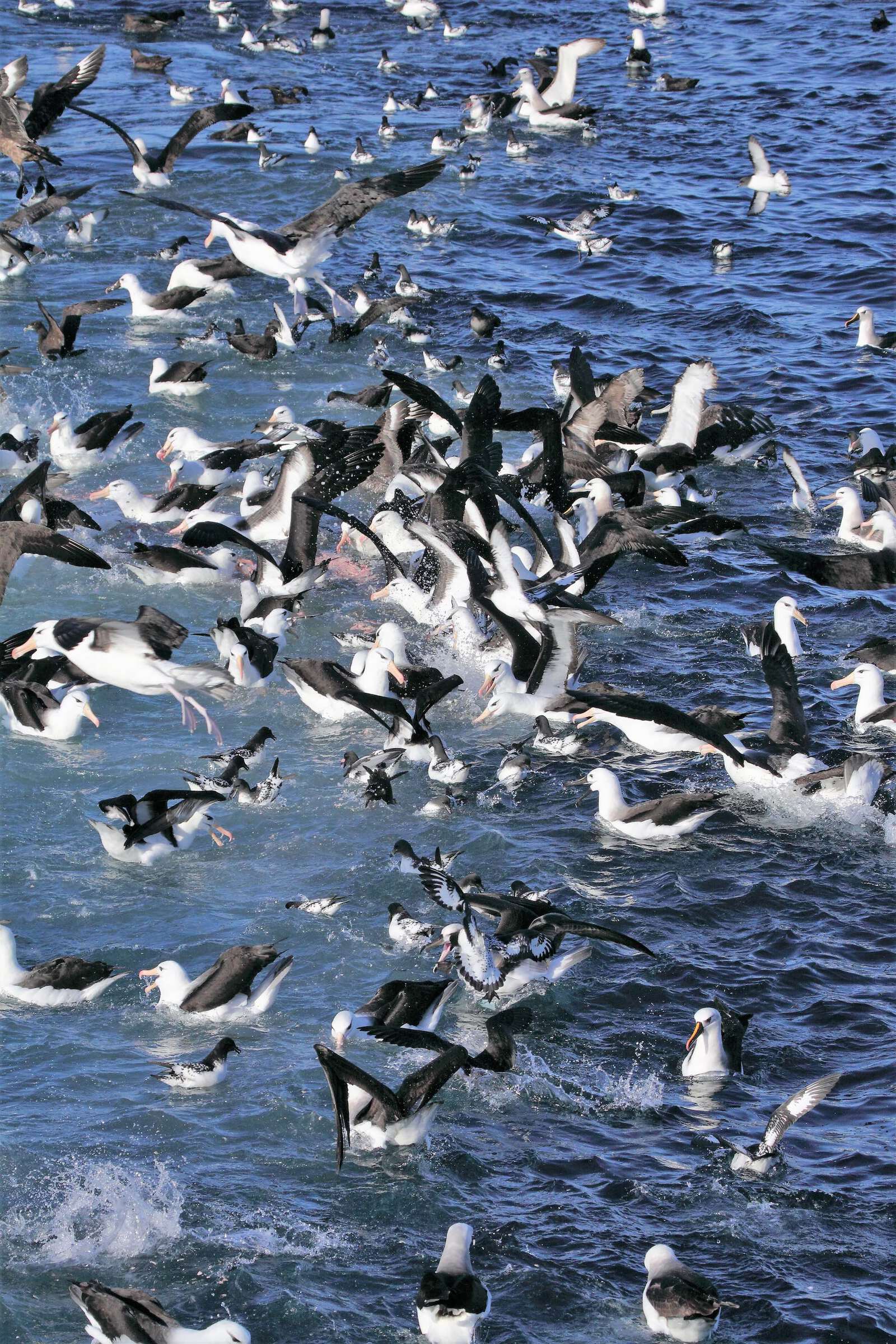
This remarkable achievement is testament to over a decade of hard work collecting data at sea and building relationships on land. The ATF is an international project led by the Royal Society for the Protection of Birds (RSPB) and Birdlife International. The Namibian branch of the ATF, operating under the auspices of the Namibia Nature Foundation (NNF), was established in 2008.
John Paterson, who started this branch of the ATF, recalls, Our first task was to determine the extent of the problem by going to sea aboard the fishing vessels and observing seabird interactions with the fishing gear. This is how we discovered just how deadly the Namibian longline and trawling fleets were for seabirds.
This was only the beginning, he says and continues, We also found out that relatively cheap and simple devices and strategies that had minimal interference with fishing operations were effective in reducing potentially deadly interactions between seabirds and fishing gear.
The next six years included more data collection at sea and developing a good working relationship with the Ministry of Fisheries and Marine Resources (MFMR) and the commercial fishing companies. Working with the fishing companies was crucial, as passing regulations without creating awareness of the problem and providing good reasons for following those regulations could lead to limited compliance. Although the MFMR's Fisheries Observer Agency (FOA) sends out many observers on board fishing vessels to ensure that they adhere to regulations, they cannot cover every vessel on every fishing trip. Building trust with the industry and the FOA was a key part of ATF's work right from the beginning,
John notes, even getting permission to board the vessels as observers was only possible after we established a working relationship with them.
For the ATF the first sign of success was when some fishing companies volunteered to try their suggestions, which paved the way for high levels of compliance once the new regulations were gazetted by MFMR in 2015. One of the most important of these suggestions is to attach ‘bird scaring lines' to the fishing lines and nets, which do exactly what the name indicates – scare birds away from the deadly hooks and nets. Other suggestions include increasing the weight attached to the long fishing lines to make them sink out of the birds' reach more quickly and setting the lines or nets at night, because albatrosses hunt during the day.
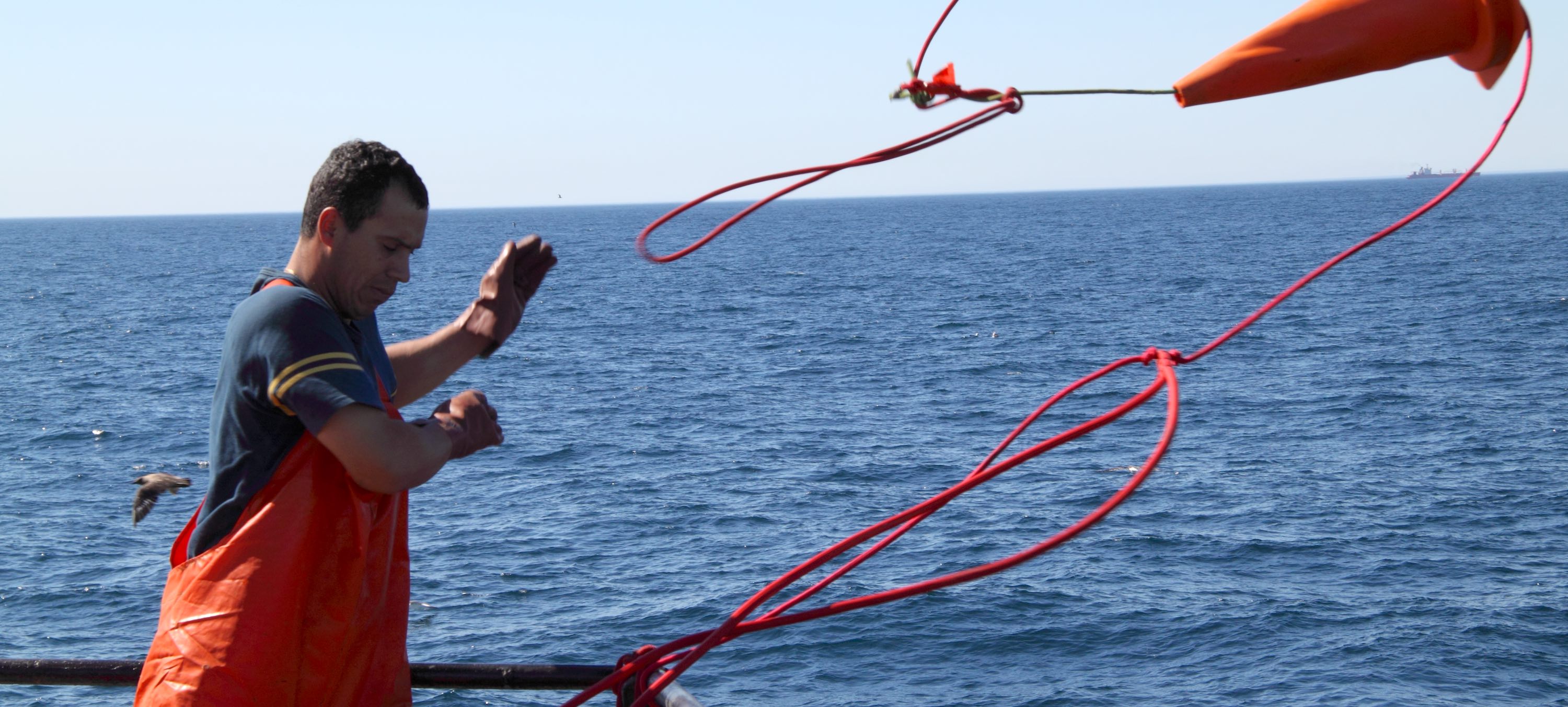
To support the use of bird scaring lines in the fisheries industry, the ATF partnered with NamPort in 2013 to help five women from Meme Itumbapo Craft (CC) in Walvis Bay start manufacturing the lines to sell to fishing companies. When the ATF met them for the first time, these ladies were making jewellery from seashells in an effort to support their families, but that is a small and unstable market. In recognition of their efforts and self-motivation, the ATF team identified this group as a potential local manufacturer for bird scaring lines. The hard-working women grabbed the opportunity with both hands.
The group started making these lines before the regulations came into place, when the first few fishing companies started experimenting with the lines based on ATF's suggestions. While NamPort funded the start-up costs for manufacturing, the NNF assisted the ladies with administrative tasks and establishing a contract with a local manufacturing company that supplies the fishing companies. Today, Meme Itumbapo runs its affairs independently and is a proudly Namibian manufacturer of bird scaring lines.
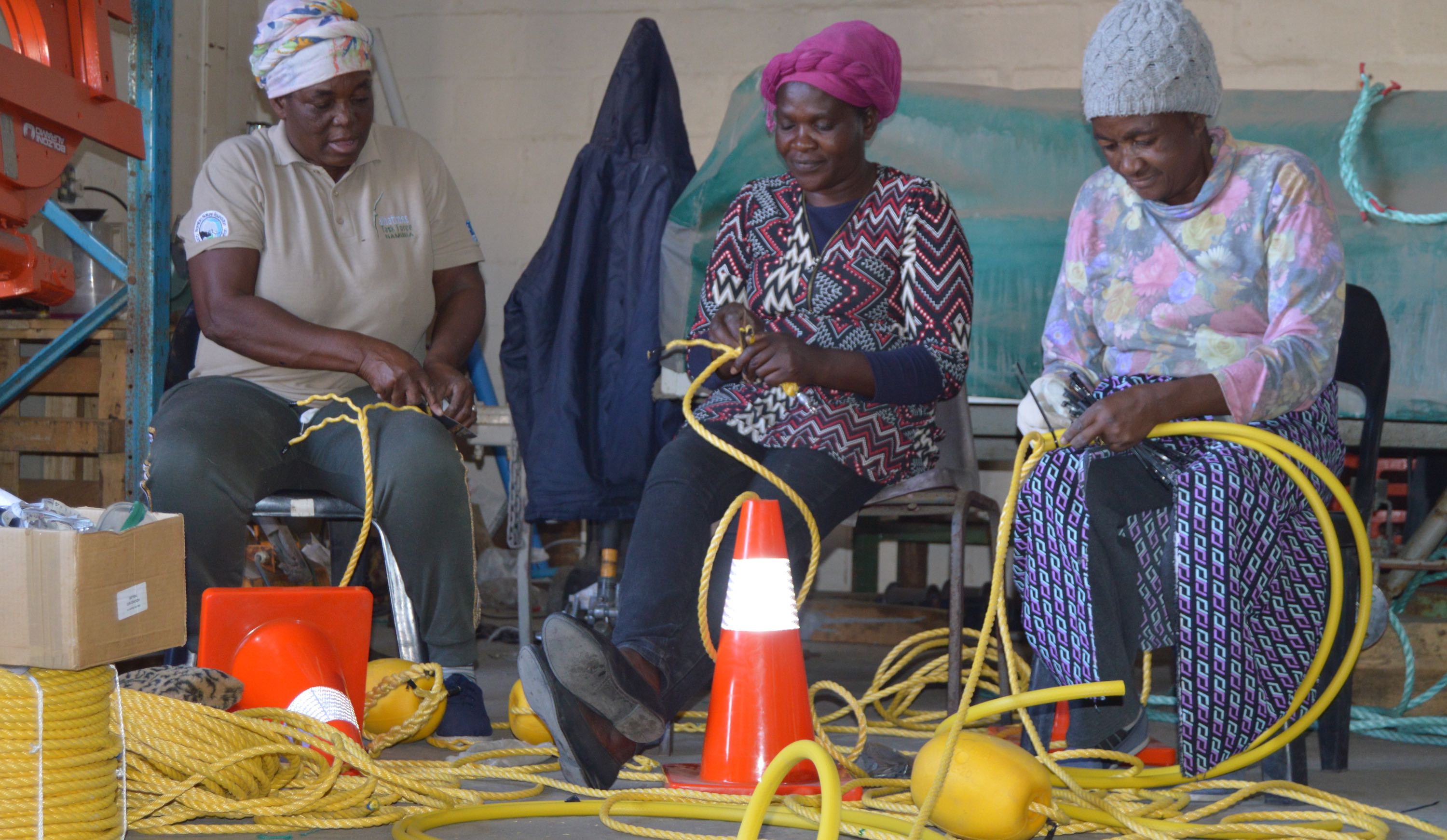
The Namibian ATF team's success has not resulted in complacency, however, as there is still more work to be done. In 2015, Titus Shaanika came on board with the ATF and was joined by his colleague Samantha Matjila in 2016 to build on the ATF's initial success. Although the Namibian trawl fisheries (i.e. those that use nets rather than lines) were less deadly than the longline fisheries prior to regulations (reporting about 7,000 seabird deaths in 2010), the improvement in this sector has not been as dramatic. Overall seabird deaths in this sector were reduced by 54%, although the proportion of albatrosses and petrels killed by trawlers fortunately declined from 77% to 30% of seabird deaths after the regulations were implemented.
While most trawlers used the bird scaring lines,
Samantha clarifies, they were concerned that they would get tangled with the trawl cables when they first set the nets in the ocean.
Consequently, the bird scaring lines were only deployed after nets were set, which leaves a period of time open for birds to collide with trawl cables. Further, if fish offal is discarded overboard during the setting procedure before the scaring lines are deployed, the vessels present a deadly attraction for seabirds during this time. We are finding ways to address the fishing captains' concerns about bird scaring lines and working with MFMR to further improve the regulations,
Titus concludes confidently.
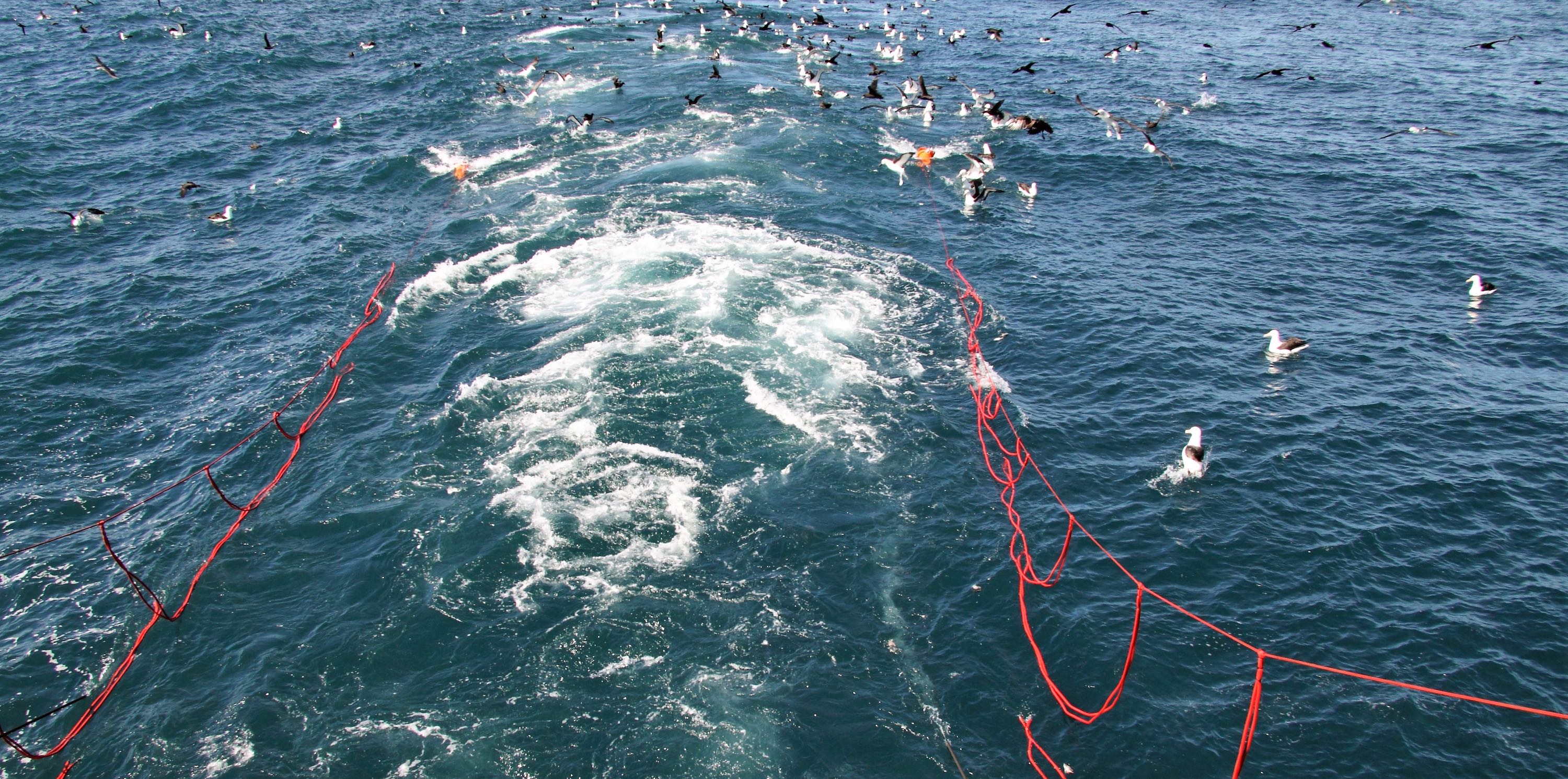
The Namibian government, the fishing industry and conservation groups are working together to save thousands of seabirds, including threatened albatross and petrel species. Science is informing policy, while bringing industry on board and empowering women from disadvantaged backgrounds. In conservation terms, this is the stuff of fairy tales.
But the fairy tale doesn't end there. On a small island in the middle of the raging Atlantic Ocean, hundreds of fluffy juvenile Atlantic yellow-nosed albatrosses will take to the sky in March-April 2022. At first ungainly and unsure, they will eventually join the ranks of the world's most graceful fliers, making their way to the Namibian coastline with barely a flap of their wings. With far less danger posed by the humans fishing in the ocean below, they will find their own fish, learn to dance and establish life-long relationships with their mates, with whom they will raise yet more fluffy little chicks for many years to come.
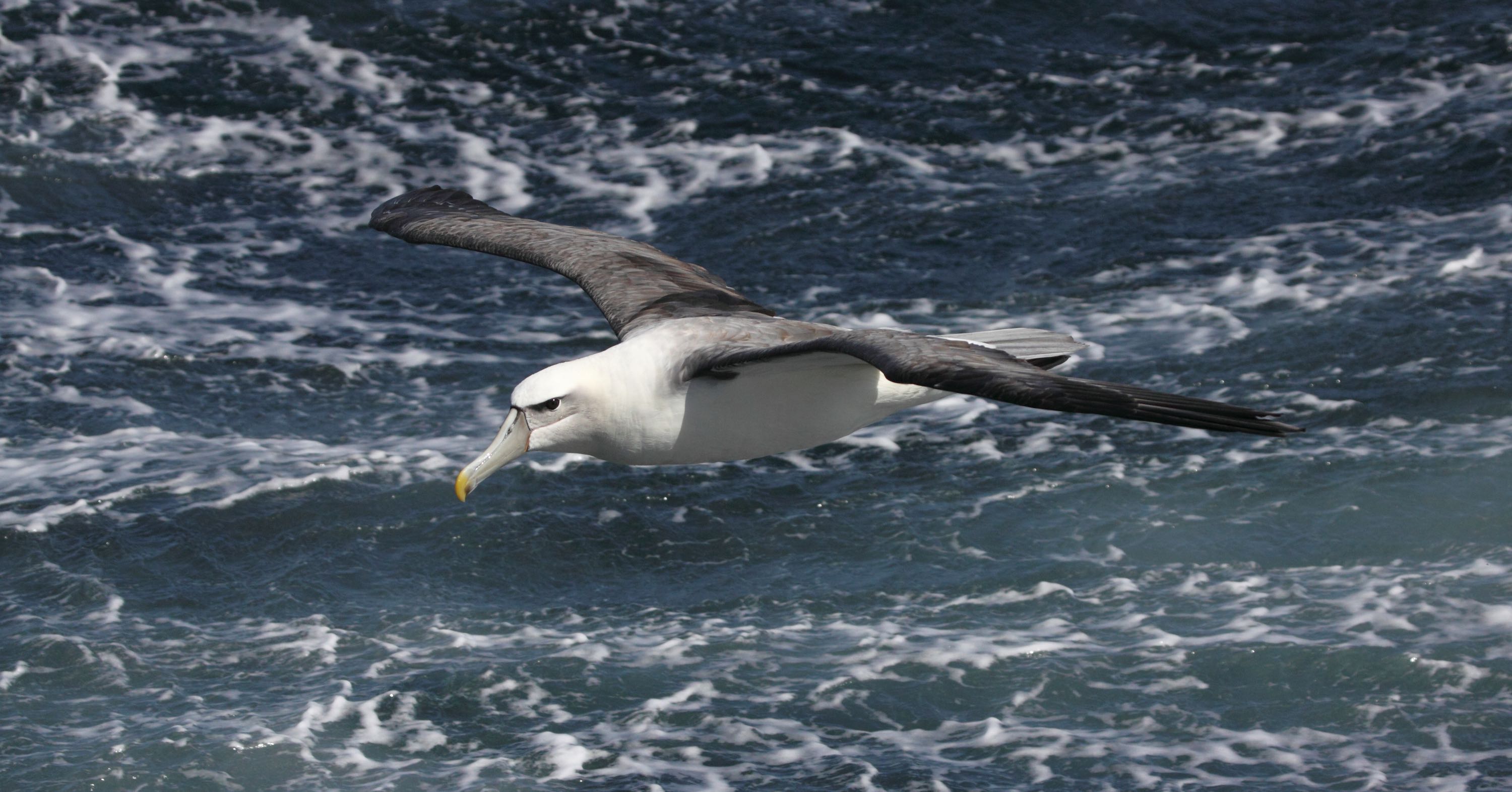
Key references:
Paterson, J.R.B. et al. (2017). Seabird mortality in the Namibian demersal longline fishery and recommendations for best practice mitigation measures. Oryx 53(2), 300–309 [https://doi.org/10.1017/S0030605317000230]
Da Rocha, N. et al. (2021). Reduction in seabird mortality in Namibian fisheries following the introduction of bycatch regulation. Biological Conservation 253, 108915. [https://doi.org/10.1016/j.biocon.2020.108915]
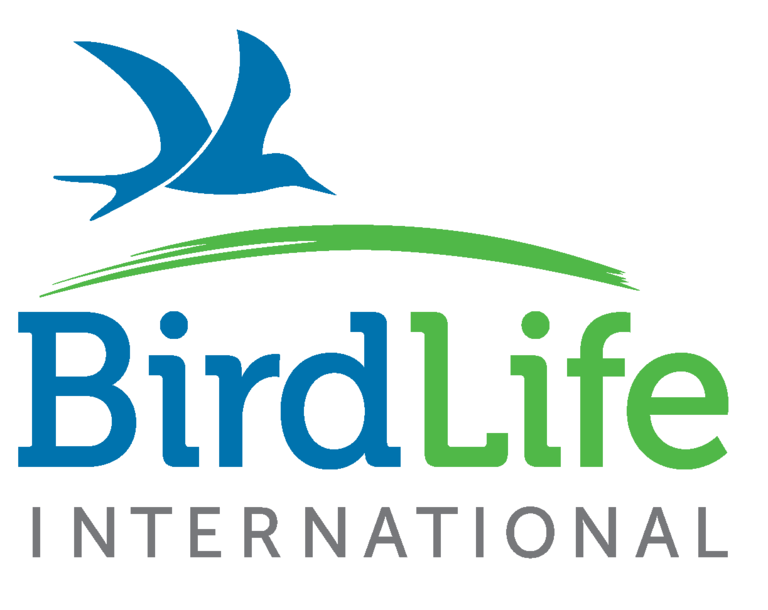
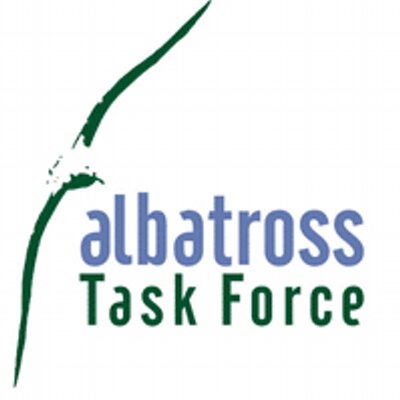

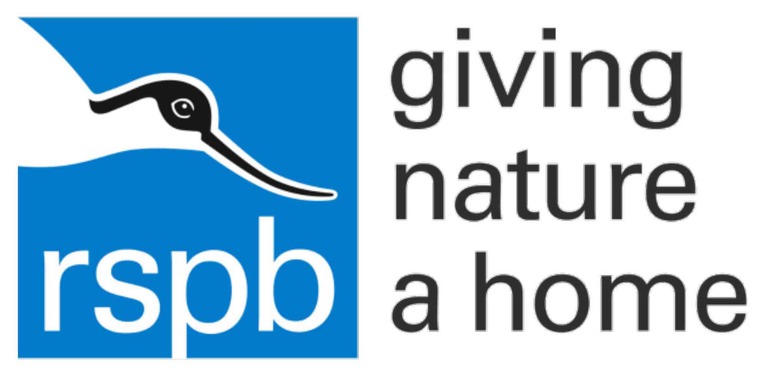
For articles on similar topics, please click one of the following options:
If you enjoyed this page, then you might also like:
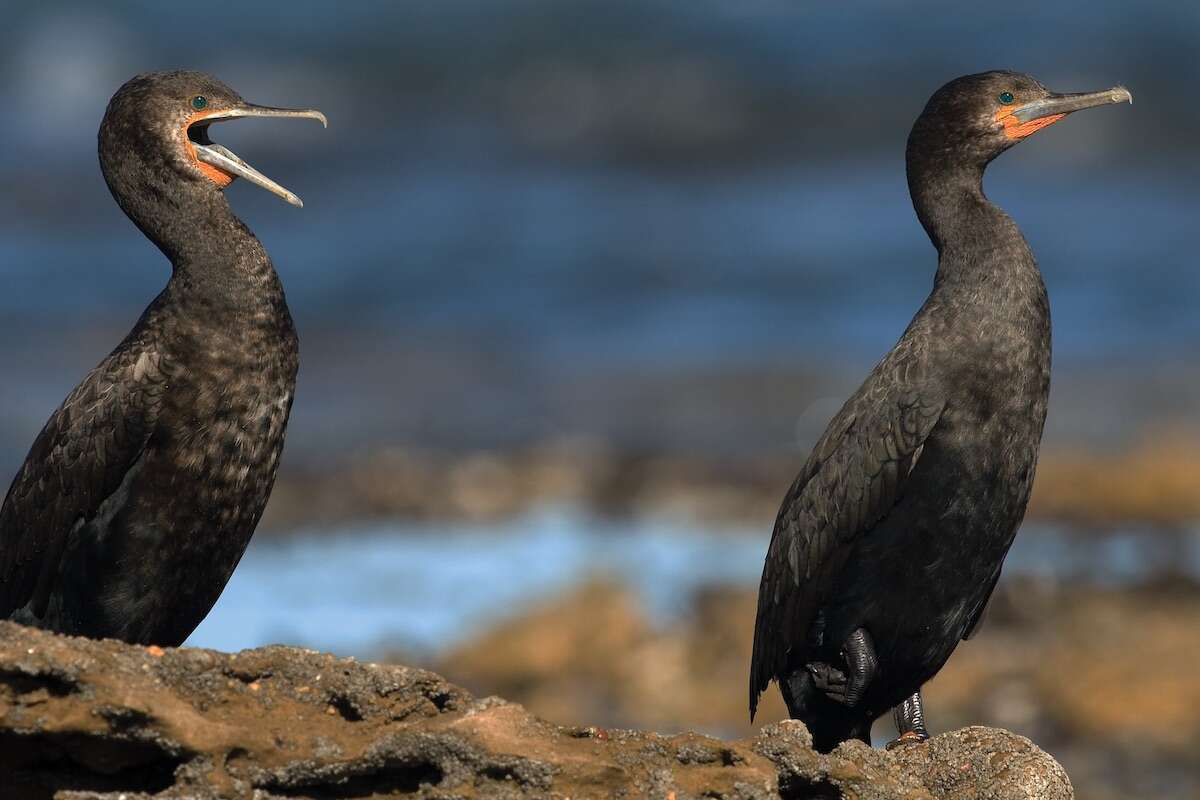
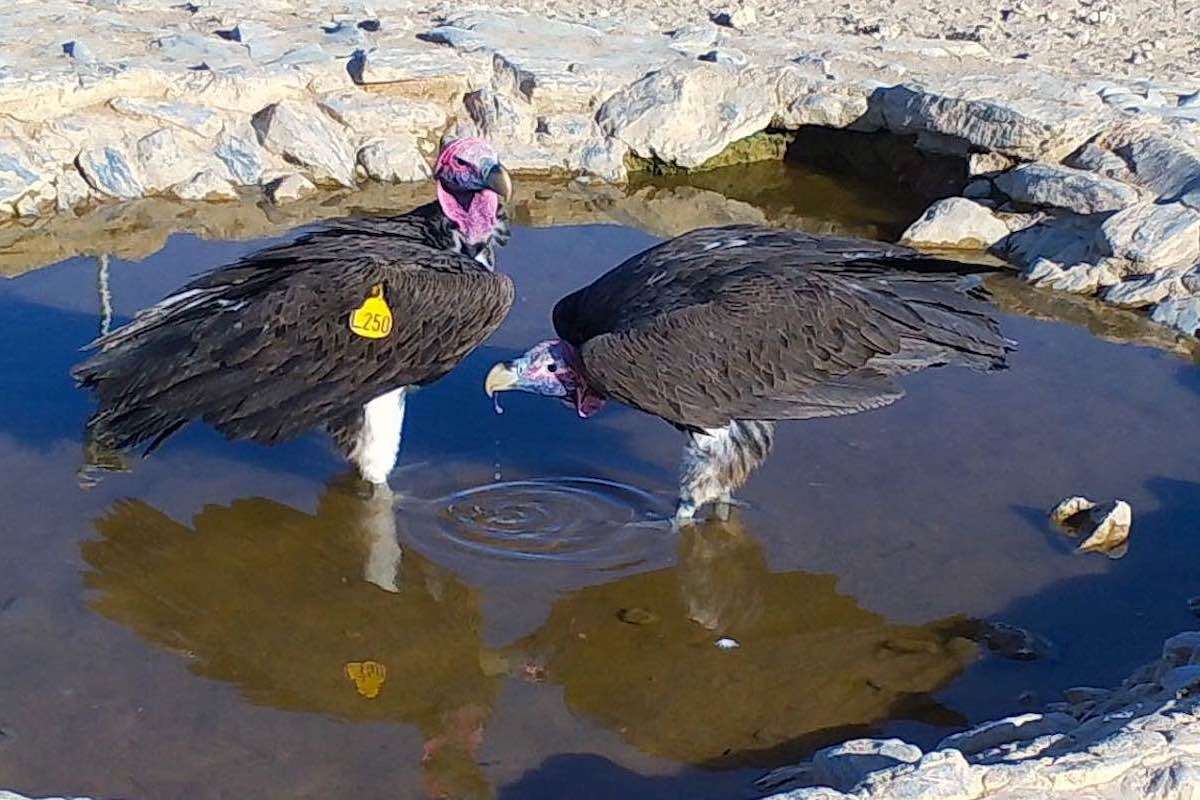

For more great articles from Conservation Namibia see below...
Conservation Namibia brought to you by:
We use cookies to monitor site usage and to help improve it. See our Privacy Policy for details. By continuing to use the site, you acknowledge acceptance of our policy.
